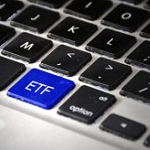3 Of The Worst ETFs For Long-Term Investors
 VXX, USO and SPXL are three of the worst ETFs to buy and hold
VXX, USO and SPXL are three of the worst ETFs to buy and hold
For long-term investors, the diversification and low costs that exchange-traded funds provide can make them some of the best investments in the market. However, much like stocks, the worst ETFs can also be portfolio poison.
Many ETFs are not designed for long-term investing at all. There are a number of ETFs out there that were created with the sole intended purpose of serving as day-trading instruments. You wouldn’t use roller skates in an ice skating rink. Yet many investors will buy and hold these day-trading ETFs hoping for long-term gains. The most important thing for investors to do is make sure they understand exactly what they are buying. Buying and selling ETFs is as straightforward as buying and selling stocks, but while they trade like stocks, they can hold a number of complicated and unique investments that can do a lot of harm to investor returns.
Here are three of the worst ETFs for long-term investors.
Worst ETFs: Direxion Large Cap Bull 3X Shares (SPXL)
I’m going to make an example of the Direxion Large Cap Bull 3X Shares (ETF) (NYSEARCA:SPXL). It’s not because it has been one of the worst ETFs in recent years. It’s because it has been one of the best.
The SPXL is a special type of fund known as a leveraged ETF. The SPXL is designed to generate three times the return of the S&P 500 each day.
On the surface, that leverage may seem like great news. S&P 500 ETFs like the SPDR S&P 500 ETF Trust (NYSEARCA:SPY) are widely considered to be some of the best long-term investments available. If you could triple the return of the S&P 500, that would be three times as good. Right?
The SPXL and other leveraged ETFs gain their leverage by buying and selling complicated derivatives and swaps at the end of each trading day. The goal is to triple the return of the S&P 500, good or bad, every day. The problem lies in the math.
If the S&P 500 consistently goes up over time, the SPXL will perform well. It has been excellent during the extended bull market. But when the market goes sideways, the SPXL hemorrhages value. And of course, if the S&P 500 crashes 34% during the next recession, we all know what 34% times three is.
Worst ETFs: United States Oil Fund (USO)
Let me start off by saying I’m a huge long-term oil bull. Unfortunately, the United States Oil Fund LP (ETF) (NYSEARCA:USO) is one of the worst ETFs for long-term oil bulls.
The problem with USO is a common problem among commodity ETFs. The USO fund doesn’t actually buy barrels of crude oil. Instead it buys oil futures contracts, which are commitments to buy a certain amount of oil for a given price at a set date in the future. Before the contracts expire, the USO managers simply “roll over” the contracts. The fund sells the contracts that are set to expire and buys a new batch of contracts with expiration dates further into the future.
The problem comes when the market expects oil prices to rise over time. This phenomenon, known as “contango,” means that the cost of the contracts the fund is buying exceeds the returns on the ones it is selling. The imbalance compounds over time.
The result is clear in the long-term performance of USO. This year, WTI crude oil prices are up 40%. The USO ETF is up just 6%.
Long-term commodity investors should look for specialized equity ETFs to buy instead. For example, the VanEck Vectors Oil Services ETF (NYSEARCA:OIH) owns shares of the largest oil services stocks in the world.
Worst ETFs: S&P 500 VIX Short-Term Futures ETN (VXX)
During the financial crisis in 2008-2009, volatility traders made a lot of money from the market crash and subsequent rebound. As a result, the iPath S&P 500 VIX Short Term Futures TM ETN (NYSEARCA:VXX) was born.
The VXX is designed to track the CBOE Volatility Index (VIX). Unfortunately, since there’s no way to directly invest in the VIX, things get a bit messy. The VXX fund instead invests in short-dated VIX futures contracts.
While these short-term contracts allow for better tracking, they are also problematic for investors. Since the short-term futures contracts are constantly expiring, the VXX fund suffers from major contango issues.
To make things even worse, the VXX isn’t technically an ETF; it’s an exchange-traded note. In addition to the normal market risk associated with an ETF, ETNs have counter-party credit risk as well.
When it comes to a long-term investment in the VXX, the trading instrument’s track record speaks for itself. Since inception, it has never had a single year of gains. Overall, it is down 99.9%.
Note: This article originally appeared at investorplace.com. For more articles about ETFs, click here…
Wayne Duggan is the author of this article. As of this writing, Wayne did not hold a position in any of the aforementioned securities.
Category: Investment Style ETFs




